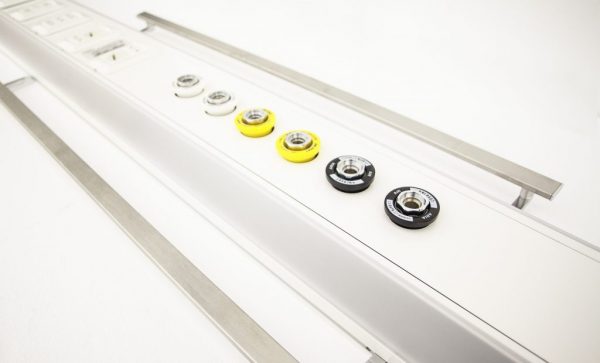Fire incidents in Bed Head Units: causes and recommendations for prevention
Fire incidents in Testaletto Beams: causes and recommendations for prevention
Disasters that lead to mass destruction often bring to the fore the inadequacies of systems, infrastructure, and people. In the health care setting, these imperfections are particularly apparent during fire disasters. This case describes a real fire incident that broke out in a header beam panel of an emergency room and describes the real challenges encountered by emergency personnel to preserve both lives and property. The bedhead beams include both electrical and medical gases-a fairly common structural component in modern hospitals. Precautionary measures should be implemented to mitigate such accidents and special care should be taken during the design and installation of header panels. Better coordination, planned training, and fire drills can improve overall outcomes and minimize the possibility of these potentially fatal problems, thus making the health care environment safer for every caregiver and patient.

In health care, most fires have originated from electricity-related causes, particularly along the side of bedheads in patient care areas, as these areas are characterized by high oxygen density, complex equipment, the presence of a network of cables, and the abundant use of highly flammable chemicals and hand sanitizers. Typically, a bedhead panel consists of modular sections (usually 4 to 14 numbers) for power supply to monitors, ventilators, and defibrillators, as well as points for lighting, communication, and gas, liquid, and anesthetic evacuation systems. Although these testaletto units operate reliably and safely, it is not possible to completely rule out leaks from the outlets of these gases. Likewise, there is always the possibility of sparks or short circuits in electrical devices or outlets due to faulty equipment or sudden malfunction of work equipment. Thus, the availability of an oxygen-rich environment, the complexity of equipment and highly flammable materials can easily turn a relatively harmless spark into a flame and rapid ignition of materials.
This case study aims to assess the root cause of a reported fire incident in one of the headboard panels in the Advanced Trauma Center (ATC) of one of the tertiary hospitals in northern India.
The case
On March 23, 2021, at 3:12 p.m., a fire broke out on the second level of the ATC when nursing staff noticed a flame in one of the headboard panels, and within minutes the entire area was filled with smoke. A code red was immediately alerted and the fire hall was contacted on dedicated lines. At the time of the incident, there were 68 critical/sick patients in the affected area, and with the help of nursing and security personnel, all patients were immediately evacuated to the safe/collection areas. Fire safety personnel extinguished the fire. The medical gas supply and power supply to the area were disconnected as a safety measure.
After thorough inspection and maintenance and after obtaining clearance from the institute’s electrical, biomedical, and collector departments, all services were restored. No casualties were reported. No major loss of property was reported. At first glance, after a thorough inspection and input from all parties involved, it was determined that the fire may have occurred due to a spark at one of the electrical points in the panel, which triggered the ignition of lint already deposited at the extraordinary point and was augmented by the loss of oxygen from the oxygen outlet in the headboard panel of the bed itself.

Conclusions
Following detailed deliberations and investigations, it was stressed that regular cleaning and scheduled maintenance of these panels are some of the key factors in mitigating such accidents. In addition, measures will have to be studied to have panels with separate electrical units and collectors. Therefore, special attention should be paid to the design and installation of electrical services and manifolds, strictly complying with building codes and other technical regulations. Regular maintenance and scheduled services are a key link in mitigating any fire risk from failures of electrical circuits and medical gas services.
Therefore, it is well understood that although the risks associated with bedhead panels cannot be completely eliminated, it is advisable to adapt/implement optimal fire prevention measures in the design phase itself and comply with prevailing fire codes. In addition to this, established strategies and regular drills are essential to ensure that personnel are fully aware of the actions to be taken in any hazardous situation. It is well established that regardless of any disaster situation, natural or otherwise, internal or external, health care professionals must always assume unique responsibilities for the safety of humanity.
J Family Med Prim Care. 2022 Jan; 11(1): 360–362.
Published online 2022 Jan 31. doi: 10.4103/jfmpc.jfmpc_1269_21
Fire incidents in Bed-head panels: Causes and recommendations for prevention
Author information Article notes Copyright and License information Disclaimer
